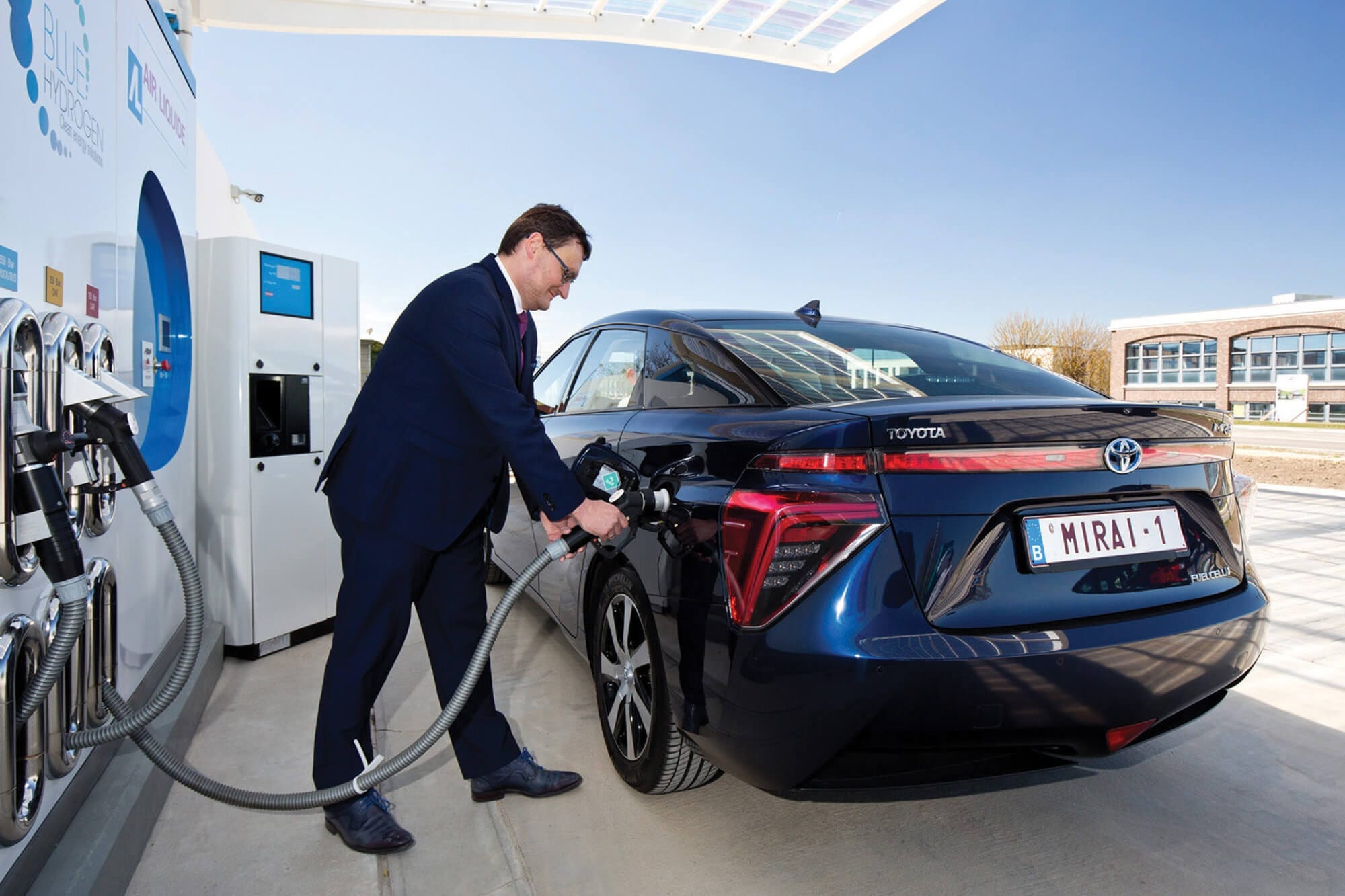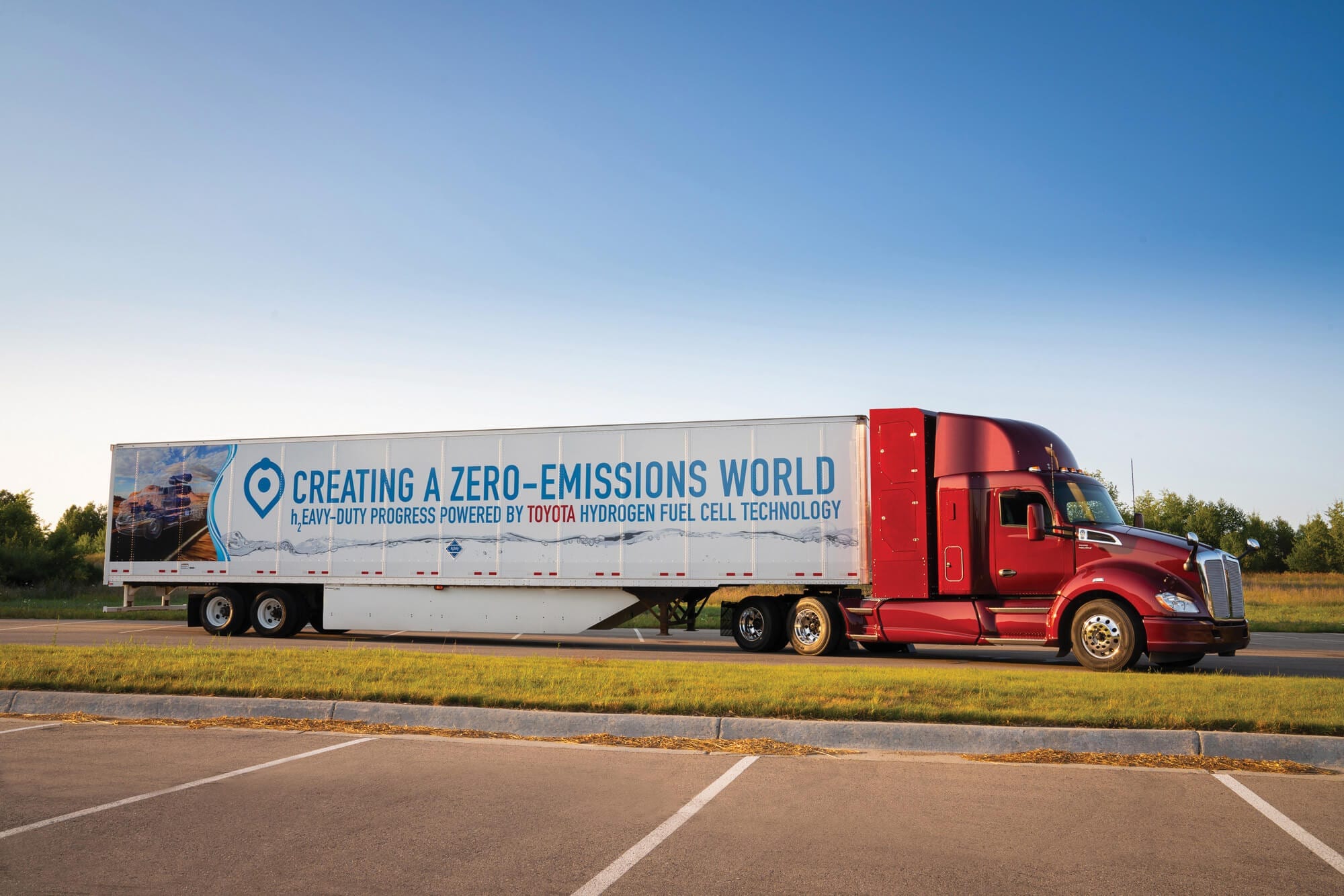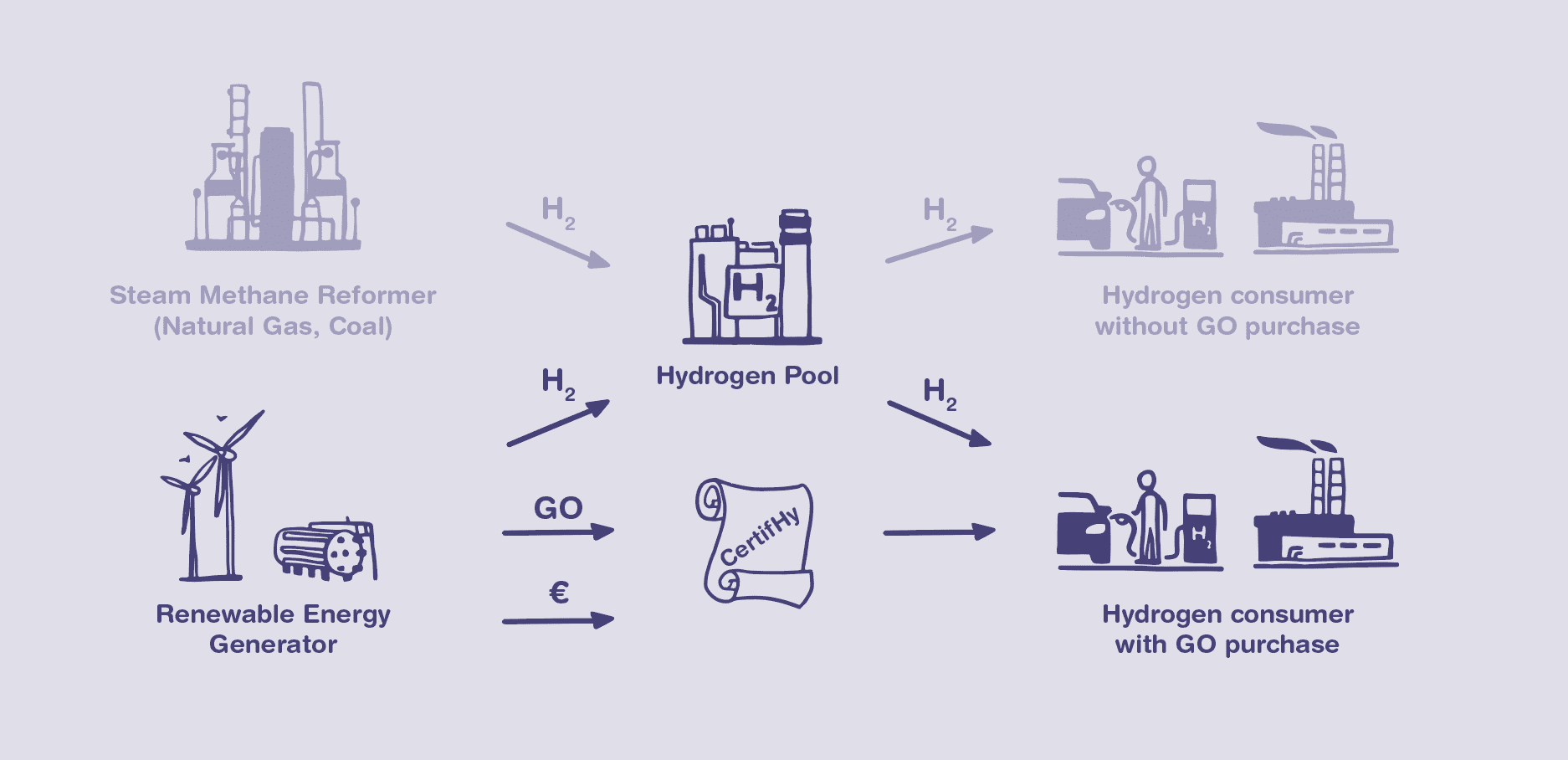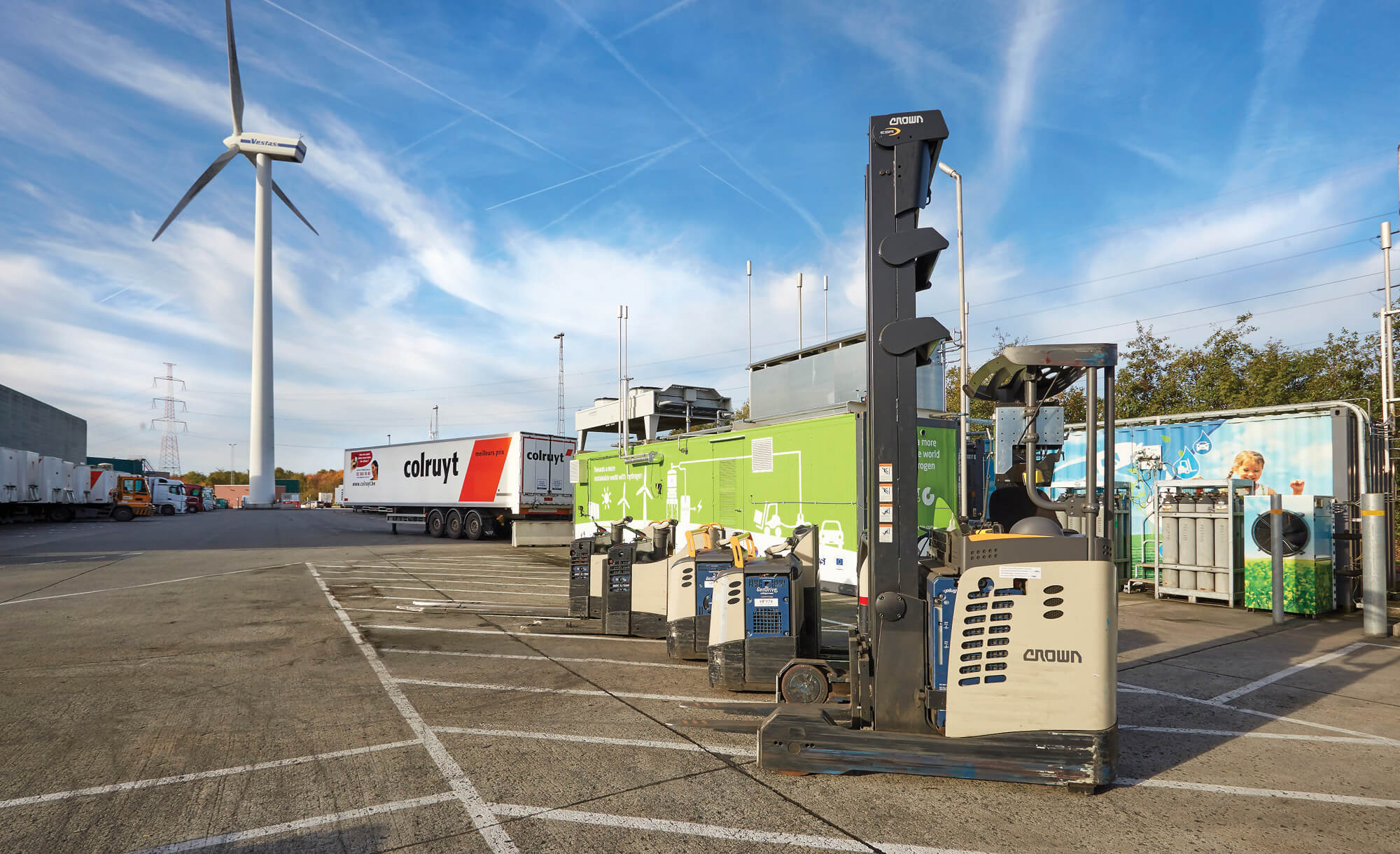The Hydrogen Revolution Is Underway
To realize the global climate and Sustainable Development Goals, decarbonizing the transport sector is key: hydrogen offers promising opportunities for driving forward sustainable mobility and energy while being profitable.
The energy transition is well on the way with multiple technologies already mature to help reach the emissions reduction objectives set by the Paris Agreement. Hydrogen technologies are one of them. As an energy carrier, it allows the decarbonization of transport, heating, and storage of energy from intermittent renewable energy sources. One of the biggest challenges facing the energy transition is to find profitable business cases to integrate these technologies into the energy system.
The EU’s goal to cut greenhouse gas emissions by 80-95% would mean reducing transport emissions by 60% by 2050; however, the mobility sector is particularly difficult to decarbonize in Europe. Hydrogen mobility is an important part of the solution but faces the chicken or egg problem: On one hand, investors are not yet ready to invest in hydrogen refuelling stations (HRS) because there is a small number of cars on the road. On the other hand, car manufacturers do not want to deploy vehicles in regions with a low-density HRS network. Currently, existing stations are financed mostly by Public-Private-Partnerships.

Hydrogen is profitable today
How can hydrogen innovations be lucrative today and in future? A study by Hinicio and Tractebel Engineering, financed by the Fuel Cell and Hydrogen Joint Undertaking, examines under which conditions Power-to-Gas can be viable economically today and in 2025. One of the key findings is that cost-effective business cases for hydrogen refuelling stations already exist. Therefore, the chicken-or-egg problem can be solved more easily than expected.
Hydrogen is not a primary energy source that is naturally available. One way to produce hydrogen is via water electrolysis—the decomposition of water into hydrogen and oxygen through electricity. To achieve low emissions from Well-to-Wheel, the life-cycle analysis of transportation fuels, electricity must come from renewable sources with low carbon emissions. As the cost of electricity is the most influential part in the overall cost of hydrogen, it needs to be as low as possible. Modelling allows to spot the most favorable places in Europe from an electricity point of view. Discount electricity can be received where a large amount of curtailed electricity is available, meaning electricity is produced but the grid cannot take it up, resulting in grid congestion.
Germany, France, Denmark and Great Britain have planned to deploy hundreds of Hydrogen-Refuelling Stations over the next decade.
Next to producing hydrogen for a mobility market, the electrolyzer could inject hydrogen into the natural gas grid, greening the heating network whilst providing balancing services to the electrical grid operator. The study shows that the business case of providing hydrogen to an HRS, combined with revenue streams from gas grid injection and flexibility services, allow to de-risk the investment of a hydrogen production plant.
Especially interesting for this business case is the semi-centralized hydrogen logistic model with regional hydrogen production hubs. These electrolyzer plants can be strategically located in areas with locally-curtailed electricity available at discounted prices, low grid costs and positioned close to the gas grid as to avoid expensive connectivity costs.
Transitioning to hydrogen mobility across Europe
Hinicio has been developing a unique competence center in the field of hydrogen energy within Europe since 2007. The region has ambitious plans for a future Hydrogen Economy. Many countries have demonstrated an ambitious hydrogen mobility roadmap: countries like Germany, France, Denmark and Great Britain have planned to deploy hundreds of HRS over the next decade. The Hinicio-Tractebel study shows that the electrolysis market with the described conditions of profitability in these four countries provided 1,300 MW in 2017, which is sufficient to produce the amount of hydrogen planned.

For creating more “sweet spots,” the study recommends developing a clear regulatory framework of access to curtailed electricity from renewables. Furthermore, grid charge exemption should be extended to other EU Member States. Also, hydrogen injection into gas grids should benefit from the same rules and tariffs as bio-methane injection and system services (especially Frequency Containment Reserves) also accessible for electrolyzer plants.
One way to produce hydrogen is via water electrolysis—the decomposition of water into hydrogen and oxygen through electricity.
Hydrogen technologies demonstrate that they are an integral part in the great energy transformation of the 21st century and have great potential to be an important cornerstone of the future energy system. Now, the evolution of the regulatory environment is crucial for developing the niche market and to make this silent revolution louder in the near future.
CertifHy
Designing the first EU-wide Green Hydrogen Guarantee of Origin for a new hydrogen market
Hydrogen is a key vector to reach climate change targets as it enables massive decarbonization in industry and transport when it is produced from renewables or low carbon energy sources. Global demand for hydrogen is foreseen to reach 50 million tons by 2025 and there is a potential that 50-60% of all hydrogen originates from renewable or low-carbon energy sources by 2030. A reliable scheme that tracks and certifies the origin of the produced hydrogen is essential to create a market for Green and Low-carbon hydrogen, as it is and has been for renewable electricity.
CertifHy is developing the first EU-wide Guarantee of Origin (GO) scheme for Green and Low-carbon hydrogen. Led by Hinicio and in cooperation with Grexel, LBST, TNO and TÜV SÜD, the initiative is financed by FCH JU, the European public-private partnership for hydrogen and fuel cell technologies and is supported by the European Commission. CertifHy will provide information about the source of the hydrogen with certificates being traded through an electronic registry separate from the physical flow. This allows EU-wide transferability and consumption of Green and Low carbon hydrogen and for profitable business cases to develop. A GO scheme offers transparency, empowers consumers and creates market pull for Green and Low-carbon hydrogen.

From concept to implementation
Based on the definitions of Green and Low-carbon hydrogen and a solid framework built during the first phase of the project, CertifHy is implementing the GO scheme currently. This includes defining the scheme’s governance, as well as its processes and procedures over the entire GO life cycle: from auditing the hydrogen production plants, certification of hydrogen production batches, through the issuing and trading, all the way up to the sale of GOs.
Four pilot projects showcase different hydrogen production pathways and are testing CertifHy at their respective hydrogen production plants located throughout Europe. The industrial gas company Air Liquide demonstrates a hydrogen production plant using steam methane reforming with CCS/CCU unit in France. The chemical companies Air Products and Akzo Nobel present hydrogen production using a chlor-alkali process in the Netherlands. As a retailer Colruyt demonstrates on-site hydrogen production for its fleet in Belgium and the German energy storage company Uniper shows hydrogen production from water electrolysis. Their production batches are audited during this pilot and the corresponding GOs will be up for trade in the second half of the project.

CertifHy’s stakeholder platform (including four working groups) is a forum of discussion about how to structure the system and manage the pilot stage. It brings together 130+ European organizations across the whole supply chain contributing to shaping the GO scheme. “Whereas the first phase of CertifHy built a solid foundation with 14 companies and already more than 500 followers; I am greatly satisfied we are now rolling out the system with more than 800 stakeholders and creating a European harmonized system,” states CertifHy’s project coordinator Wouter Vanhoudt during CertifHy’s stakeholder platform’s first plenary session in November 2017.
By early 2019, CertifHy is creating the path forward for a concrete and actionable GO scheme. A reliable and efficient GO scheme will contribute to decarbonizing energy and transport, enhancing renewable energy use and moving ahead to a new energy market.
For more information please visit www.certifhy.eu and contact the CertifHy consortium via certifhy@hinicio.com